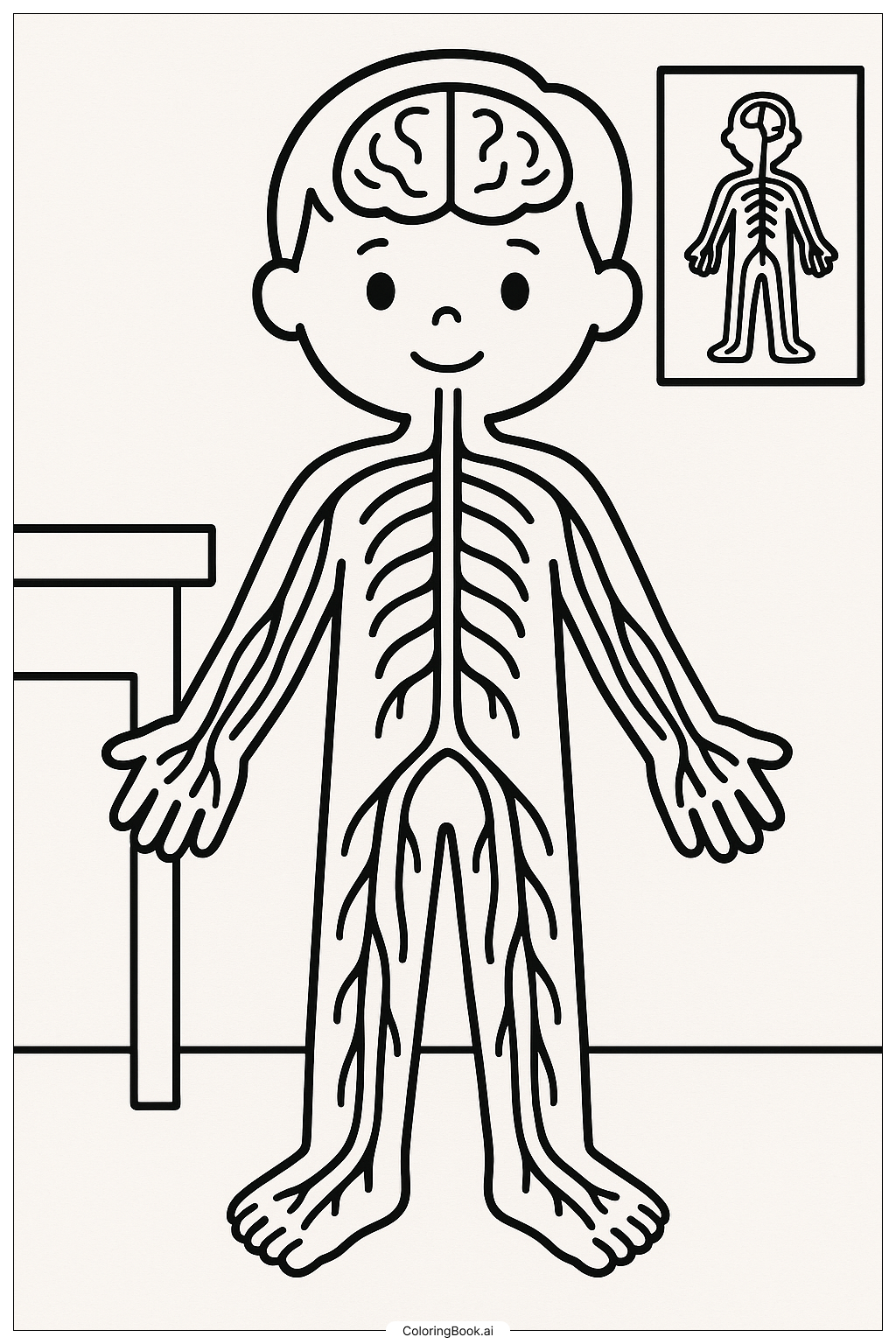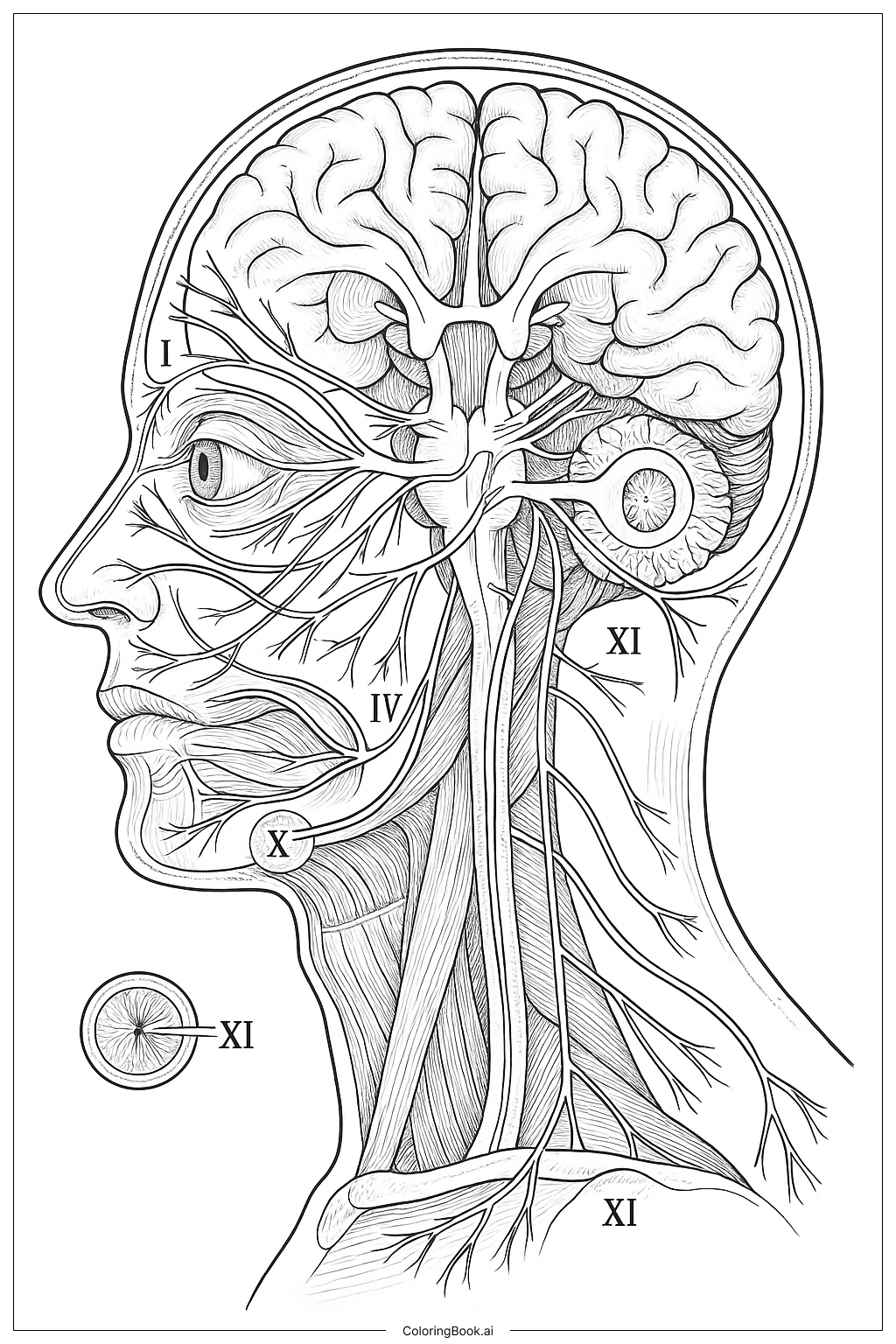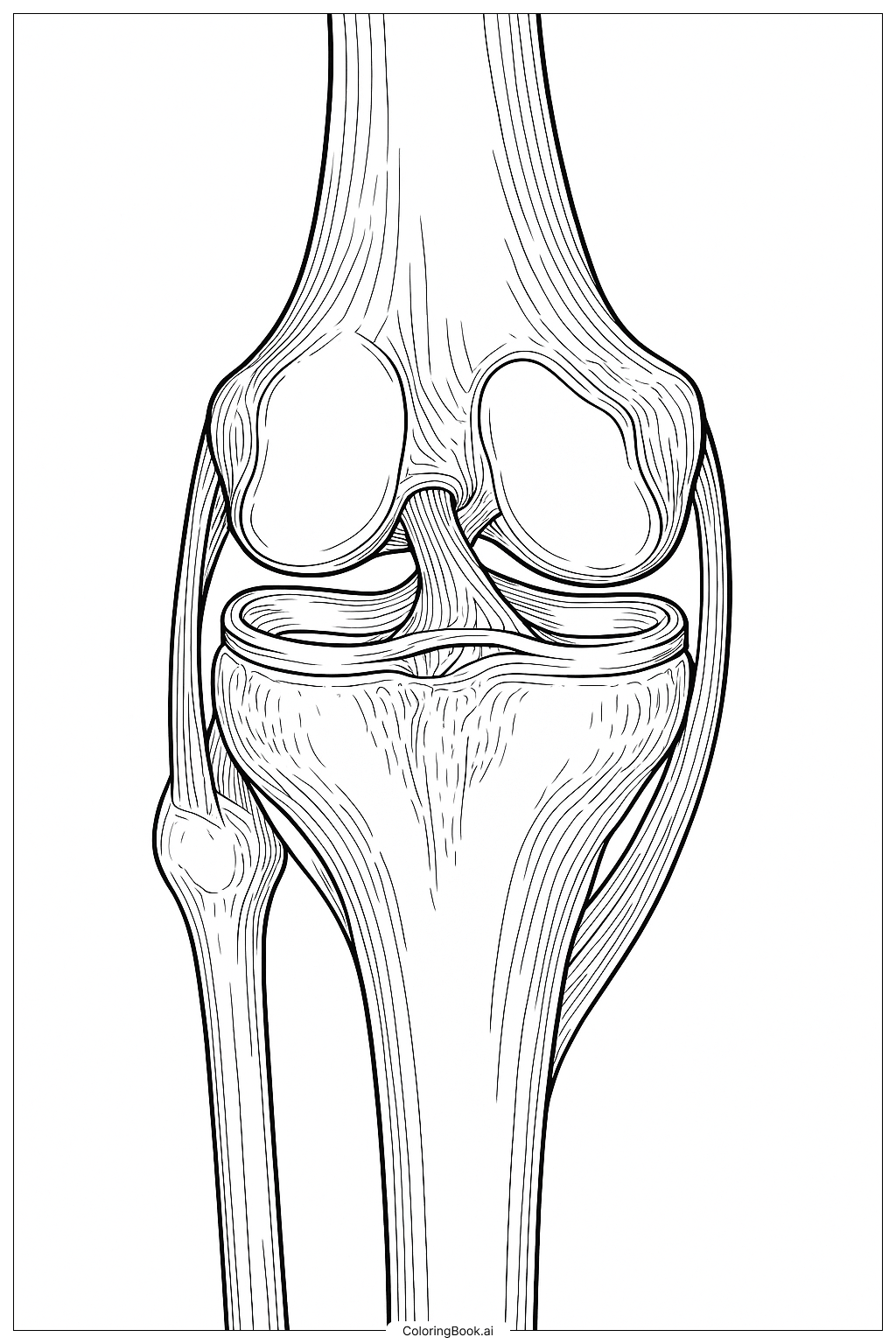Coloring tips: How to color Human Nervous System Anatomy coloring page well?
Use different colors for the brain, spinal cord, and peripheral nerves to clearly show the parts of the nervous system. You can color the brain pink or purple to make it stand out. The spinal cord can be colored light yellow, and the nerves can be a mix of blue, green, or orange. Color the child's skin with light peach or any pale color. For the background, keep it simple with soft colors like light blue or light green to keep the focus on the nervous system. You can also add shading to parts of the brain and nerves to make them look 3D and more interesting.
Coloring challenges: Which parts are difficult to color and need attention for Human Nervous System Anatomy coloring page?
1. The small and detailed nerves in the arms, legs, and fingers require careful coloring to avoid going outside the lines.
2. Coloring the brain with its curves and folds can be tricky because the shapes are irregular and need different shades to look realistic.
3. Keeping the nerves distinct by using different colors without mixing too many similar colors can be challenging.
4. The thin nerves near the fingers and toes are hard to color precisely for younger kids.
5. Balancing the color between the body, brain, and nerves without making the image too busy or confusing might be difficult.
Benefits of coloring books: Advantages of drawing Human Nervous System Anatomy coloring page
Coloring this page helps kids learn about the human nervous system in a fun and engaging way. It improves their attention to detail as they carefully fill in the thin nerve lines. Using different colors develops their creativity and understanding of anatomy. This activity also supports fine motor skills and hand-eye coordination. By coloring a friendly image, children become more interested in science and the human body, making learning enjoyable and memorable.








